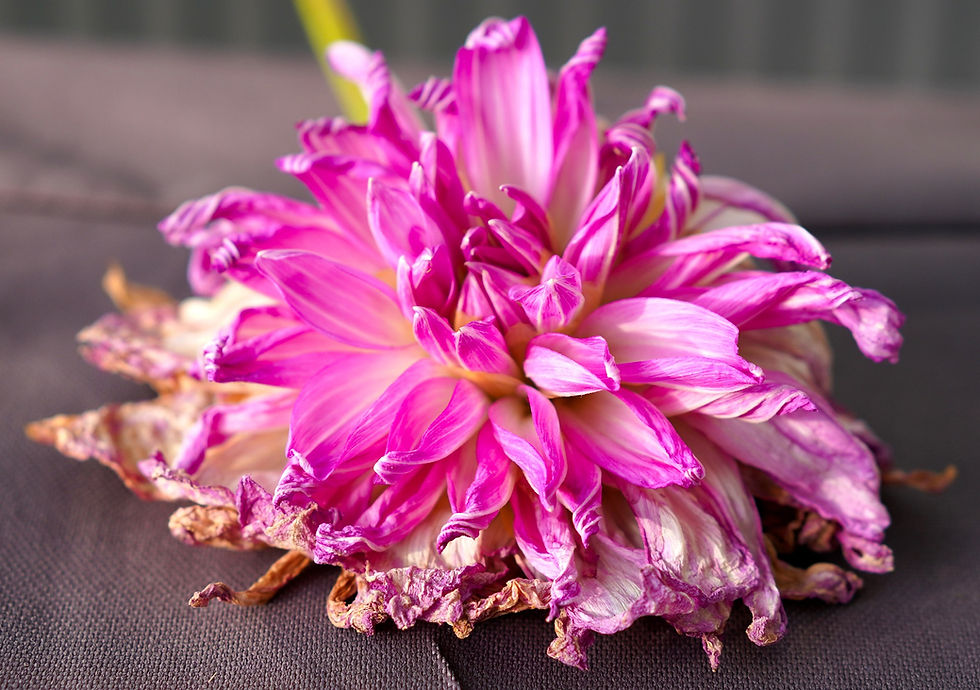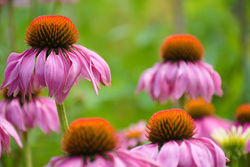Deadheading your flowers: When and how to do it
- Lars Wildes

- Feb 3, 2023
- 4 min read
Deadheading flowers is one of the best (and easiest) ways to keep your garden and borders looking fresh and beautiful. It's a simple process that can be done with a few basic tools or just your thumb and forefinger.
In this quick guide, I’ll explain the basics of deadheading and show you how to do it in a way that keeps your flowers looking great for as long as possible.
We'll also cover the benefits of deadheading, and explain why it's an important part of flower care. So if you're looking for an easy way to keep your flowers blooming for longer, read on.

What is deadheading?
Deadheading is the process of removing dead flowers from a plant to promote new blooms. This can be done with a pair of scissors or your fingers.
It’s a very simple process, so don’t let the intense name scare you away. It’s removing the ‘dead’ ‘heads’ from the flower stems.
Deadheading helps keep your plants looking fresh, and it promotes new blooms, which means more flowers for you to enjoy. Deadheading also helps extend the life of your plants by keeping them blooming for longer.
Why should you deadhead perennial and annual flowers?
Deadheading not only prolongs the life of the bloom, but it also promotes new growth and keeps the plant looking tidy — important for flowers in containers and hanging baskets. And it's really easy to do. All you need is your hand or a pair of scissors.
The process of deadheading simply means removing the flowers that have already bloomed and faded. You can do this by snipping them off at the stem, just below the flower head. (Be careful not to cut off too much of the stem, or you'll stunt future blooms.)
If you keep up with deadheading regularly, your flowers stay fresh for much longer.

Will deadheading or pinching the flowers off give you more blooms?
Yes, deadheading or pinching off the spent flowers (the flowers that have wilted and are no longer producing new blooms) can encourage more blooms in some plants.
If the flowers are left on the stem, the plant will use its energy to start producing seeds (the purpose of the flowers in the first place). Deadheading or pinching redirects the plant's energy from producing seeds to producing more flowers.
This process is called "reblooming." By deadheading, you can extend the blooming period of annuals and perennials, making your garden look fuller and more vibrant for longer.
That being said, not all plants respond the same way to deadheading, and some may not rebloom at all. It's important to check the specific needs of the plants in your garden before walking around and pinching off spent blooms.
For example, plants like petunias, salvia, and geraniums are known to respond well to deadheading, while others like peonies and hostas typically do not rebloom. By understanding the specific needs of each plant in your garden, you can determine the best way to encourage more blooms.
What flowers should not be deadheaded?
Some flowers, like some people, benefit from being left alone. For example, forget-me-nots, poppies, and clematis will self-seed, meaning they’ll drop their seeds to grow more flowers the following year. By deadheading these flowers, you'll prevent them from self-seeding and potentially stop them from coming back.
Additionally, some flowers like Black-Eyed Susans (Rudbeckia) and cornflowers (Echinacea) actually produce seeds to attract birds and other wildlife, so it's best to leave them be.
Some perennials, such as Bearded Iris (Iris germanica), peonies (Paeonia spp.) and hostas (Hosta plantaginea), don't require deadheading as they don't typically rebloom if you remove the faded flowers.
Peony, liatris and most bulbs will only bloom once per season, so you don’t need to bother with them. And some plants, like trees and shrubs, don't need deadheading as they produce fruit instead of flowers.
Before deadheading any plant, research its specific needs to make sure it's not a type that benefits from being left alone. Check with your local gardening expert or drop me a line with any questions you have.

Do all perennials need to be deadheaded?
No, not all perennials need to be deadheaded. As I mentioned above, some perennials such as hostas and peonies won’t rebloom if you remove the spent flowers. While other flowering plants like Rudbeckia produce seeds that are loved by birds.
You can deadhead perennials such as daylilies, coneflowers and Shasta daisies. (Even though coneflowers also produce seeds that birds love to eat). But these flowers will rebloom if you deadhead.
Other perennials, annuals and flowering plants that benefit from deadheading include:
Marguerite daisy (Argyranthemum frutescens)
Cherry pie (Heliotropium arborescens)
Pansies (Viola tricolor var. hortensis)
Polyanthus (primroses)
Petunias (Petunia spp.)
Geraniums (Pelargonium)
Roses (Rosa spp.)
Dahlias
Marigolds (Tagetes spp.)
Zinnia (Zinnia elegans)
Cosmos (Cosmos bipinnatus)
Delphiniums (Delphinium spp.)
Snapdragons (Antirrhinum majus)
Blanket Flowers (Gaillardia spp.)
Campanulas (Campanula spp.)
Sweet peas (Lathyrus odoratus)
Salvia (Salvia spp.)
Hydrangea (Hydrangea macrophylla) Note: Deadhead hydrangeas throughout the blooming season, but stop in mid to late fall, leaving any spent blooms in place.
Rhododendrons, camellias, and lilacs (Syringa spp.)
Deadhead any on that list and they’ll pay you back with blooms all season.
Easy way to deadhead with your finger and thumb
The easiest way to deadhead is just to pinch off faded flowers with your finger and thumb.
Just snap them off the stem. Yes, it’s that simple.
Where do you cut when deadheading?
In case you’re not convinced, I’ll say it again… deadheading is very simple.
As blooms fade, pinch or cut off the flower stems below the spent flowers and just above the first set of full, healthy leaves. This tells the plant to focus its energy on producing new blooms instead of producing seeds.
Give a quick check to be sure that no flower buds are hiding amid the faded blooms before you pinch them off.
How much do you pinch off? The general rule for deadheading is to cut back to just above a node. The node is a swelling on the stem that shows where a new shoot or leaf will emerge.
You can use your finger and thumb or a clean, sharp pair of shears or scissors to make a clean cut. This will prevent any damage to the stem and allow the plant to heal quickly.

What happens if you don't deadhead?
If you don't deadhead, your plants will use energy to produce seeds instead of putting that energy into producing new blooms.
You’ll notice that your flowers won't last as long and will stop blooming as frequently. Not to mention that some plants can become invasive if left to self-seed, so it's important to deadhead them regularly to prevent overgrowth.













Comments